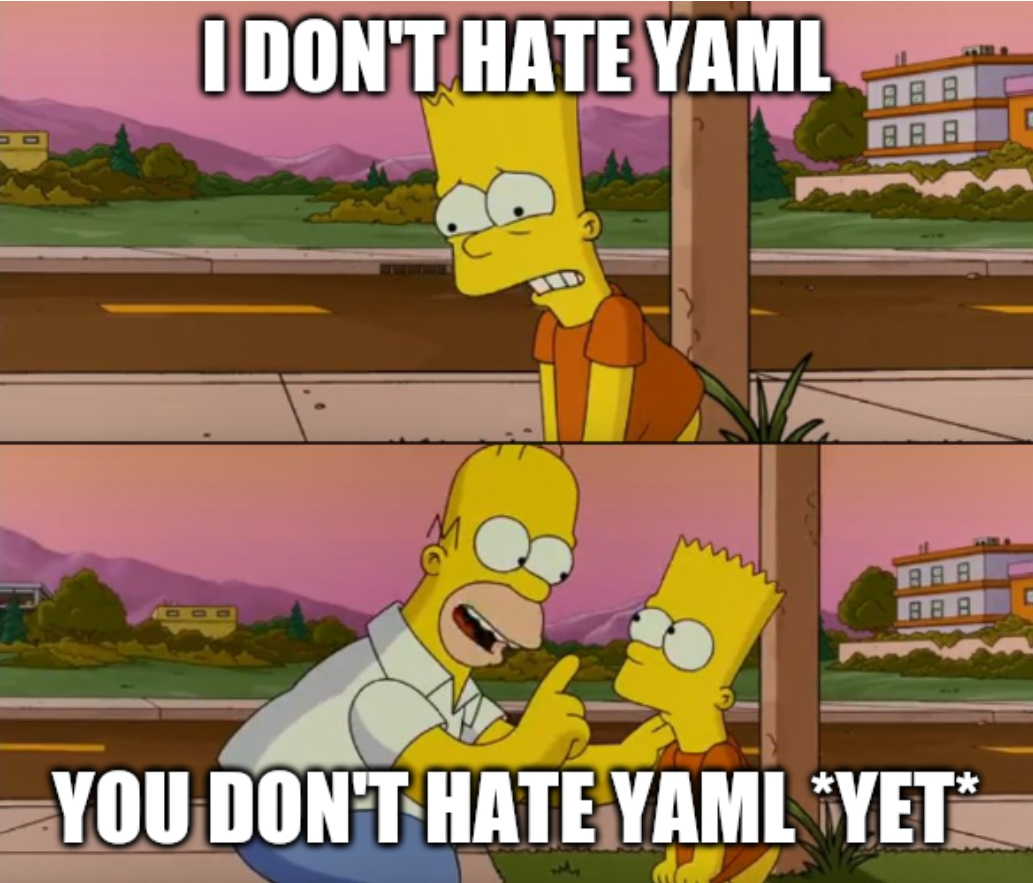YAML - Kubernetes 'Favorite' Configuration Language
When work with Kubernetes, we can interact with it via UI (I'll write about it in future) or configuration languages (YAML, JSON or HCL). This post will focus on YAML - Yet Another Markup Language.

Structure
When we import a YAML file in Kubernetes, we create a Kubernetes object which is a persistent entity in the cluster. Examples:
- Pod - the place where you run your application
- Service - a way to expose your app
- Deployment - manage replicas and update
- ConfigMap, Secret, Ingress, etc.
We just need focus to four primary top-level fields in YAML
-
apiVersion: Specifies the version of the Kubernetes API that the object belongs to. For example:
- apps/v1 for Deployments
- v1 for Pods and Services.
-
kind: Defines the type of Kubernetes object being created. Common examples include
Pod,Deployment,Service,ReplicaSet,Ingress, etc. -
metadata: Contains data that identifies the object within the cluster and provides descriptive information. This typically include:
- name: unique name for object (require)
- namespace: namespace the object belong to, default namespace is
default(optional) - labels: Attach label for object, it help another object can select base on this
- annotation: Often used for tools or specific configurations.
-
spec: Object configuration. The content of this section depending on the kind of object. For example:
- For a Deployment kind, spec defines the number of replicas, the pod template (including container images, ports, and resource limits), update strategy, and selectors.
- For a Service kind, spec defines the port mappings, selector to find target pods, and type of service (e.g., ClusterIP, NodePort, LoadBalancer).
- For a Pod kind, spec defines the containers within the pod, volumes, restart policy, etc.
Example of YAML in deployment
apiVersion: apps/v1
kind: Deployment
metadata:
generation: 2
labels:
app: wordpress #EX: app:front-end
name: wordpress
namespace: wp-ecommerce
spec:
progressDeadlineSeconds: 600
replicas: 2
revisionHistoryLimit: 11
selector:
matchLabels:
app: wordpress #EX: app:front-end
strategy:
rollingUpdate:
maxSurge: 25%
maxUnavailable: 25%
type: RollingUpdate
template:
metadata:
labels:
app: wordpress # ✅ This matches the selector
spec:
containers:
- image: wordpress:latest
imagePullPolicy: Always
name: wordpress
ports:
- containerPort: 80
name: tcp
protocol: TCP
restartPolicy: Always
If you want run it in Kubernetes, just run in your master node
kubectl apply -f your-yaml-file.yaml
Conclusion
In reality, others people can use JSON / HCL for Kubernetes too. But for some reason, maybe it look cooler 👀 (J4F), they usually use YAML for Kubernetes. Each format has its pros and cons, use what you're comfortable with.

Happy coding !